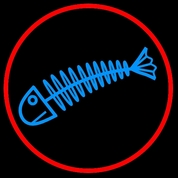Dalmatian Pelican
Pelecanus crispus
Where is it found?
Rivers, lakes, wetlands and estuaries
Diet and foraging method
Key adaptations
Large bill pouch for scooping up lots of fish.
Social organisation and mating system
Individuals feed alone or in cooperative groups and are very social, some living in colonies of over 250 breeding pairs.
Form socially monogamous pairs
Did you know?
Pelicans can store fish in their throat pouch to eat later.
They are one of the largest, and heaviest, living bird species.
They are one of the largest, and heaviest, living bird species.
Taxonomy
Picture credits:
http://www.arkive.org/dalmatian-pelican/pelecanus-crispus/
http://en.wikipedia.org/wiki/Dalmatian_pelican
http://www.birdlife.org/datazone/speciesfactsheet.php?id=3811
Maps from: species.mol.org
Second image: "Pelecanus crispus (Dalmatian Pelican - Krauskopfpelikan) - Weltvogelpark Walsrode 2012-01" by Olaf Oliviero Riemer. Licenced under CC BY-SA 3.0 via Wikimedia Commons - https://commons.wikimedia.org/wiki/File:Pelecanus_crispus_(Dalmatian_Pelican_-_Krauskopfpelikan)_-_Weltvogelpark_Walsrode_2012-01.jpg#/media/File:Pelecanus_crispus_(Dalmatian_Pelican_-_Krauskopfpelikan)_-_Weltvogelpark_Walsrode_2012-01.jpg
http://en.wikipedia.org/wiki/Dalmatian_pelican
http://www.birdlife.org/datazone/speciesfactsheet.php?id=3811
Maps from: species.mol.org
Second image: "Pelecanus crispus (Dalmatian Pelican - Krauskopfpelikan) - Weltvogelpark Walsrode 2012-01" by Olaf Oliviero Riemer. Licenced under CC BY-SA 3.0 via Wikimedia Commons - https://commons.wikimedia.org/wiki/File:Pelecanus_crispus_(Dalmatian_Pelican_-_Krauskopfpelikan)_-_Weltvogelpark_Walsrode_2012-01.jpg#/media/File:Pelecanus_crispus_(Dalmatian_Pelican_-_Krauskopfpelikan)_-_Weltvogelpark_Walsrode_2012-01.jpg












